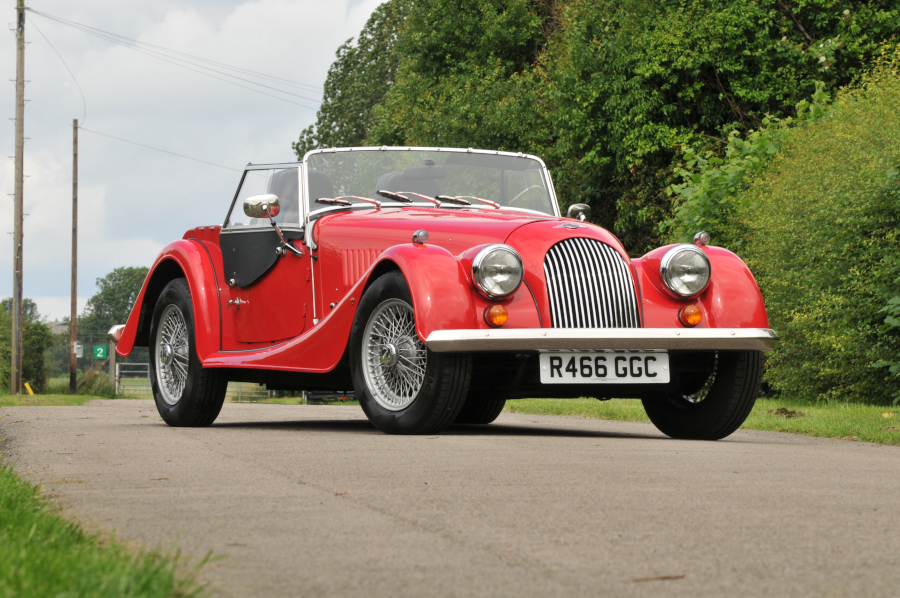The Morgan 4/4 is a practical, well-supported, reasonably reliable way into vintage open-top motoring. Here’s what you need to know
There’s not another car company in the world quite like Morgan. Since 1910 the Worcestershire firm has been doing things its own way in complete defiance of accepted business practice in the car industry and has developed a massive following in the process.
The firm started out of with three-wheelers, only moving into four-wheeled cars in 1936 with the 4-4 (later ‘4/4’), the badge signifying four wheels and four cylinders. Using a steel chassis with ash-framed aluminium bodywork, the car was a lightweight by the standards of the day and provided impressive performance. A four-seater version of the 4-4 was added in 1937, with a drophead coupe afterwards.
Postwar production restarted using the 1267cc Standard engine developed specially for Morgan, but Standard’s decision to discontinue the unit in 1947 saw the 4/4 replaced by the Plus 4 model with the 68bhp, 2088cc Vanguard engine, strengthened chassis, revised suspension and improved brakes.
In 1954 the 4/4 was reintroduced as the Series 2 on the Plus 4 chassis, now using a Ford engine and box. The familiar radiator grille was adopted and the style of the traditional Morgan hasn’t changed a great deal since then. The Plus Four gained a 90 bhp Triumph TR2 engine in 1955 and then the 100 bhp TR3 unit in 1956, while in 1962 the 4/4 was fitted with the 1500 Ford engine.
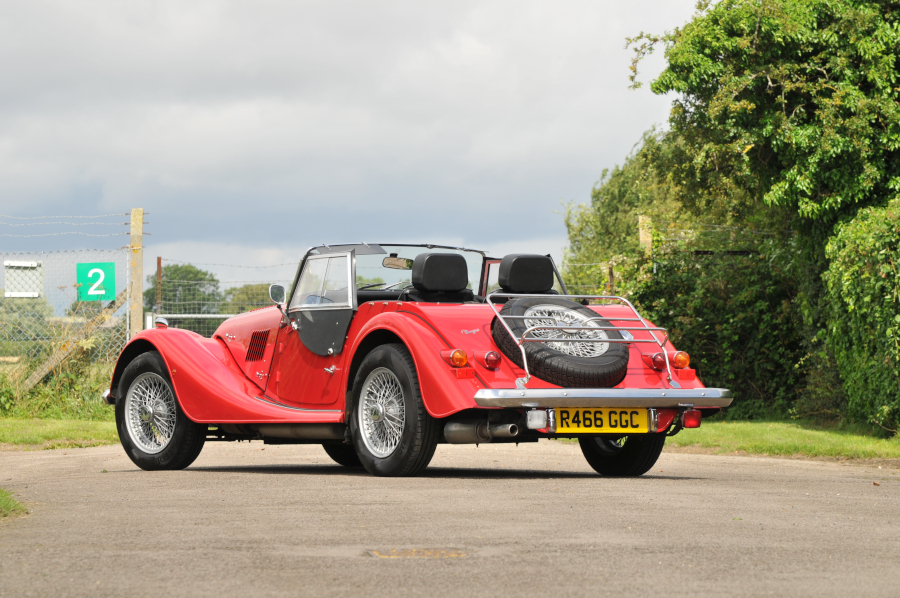
The engine was replaced in 1968 by the Ford ‘Kent’ Crossflow, itself replaced in late 1982 by the Ford CVH engine, running fuel injection from 1991. The CVH engine was replaced by Ford’s 1.8-litre Zetec unit in 1992, initially rated at 121bhp but detuned by emissions requirements to 114bhp from 1997.
In the same year the door opening was increased by 51mm, these becoming known as the ‘long door’ models. This feature was a side-effect of a possible future requirement for airbags which required a greater distance between the dashboard and the occupants and also involved the dashboard being further recessed into the scuttle. The loss of the demister vents was compensated for with the use of an electric heated screen.
In 1999, the four-seater model was reintroduced, European safety approval being made possible by replacing the old high-seat rear bench seat with two lower individual seats. The same year, the old recirculating ball steering was replaced by a rack-and-pinion set-up and the hood was improved.
The Zetec engine was replaced by the revised Ford Duratec unit from 2005, now producing 125 bhp from 1.8 litres. The range would be extended downwards in 2003 with the addition of the Runabout, a model reviving an old Morgan name which was mechanically identical to the regular 4/4 but offered a more basic specification and fewer options with a restricted colour range.
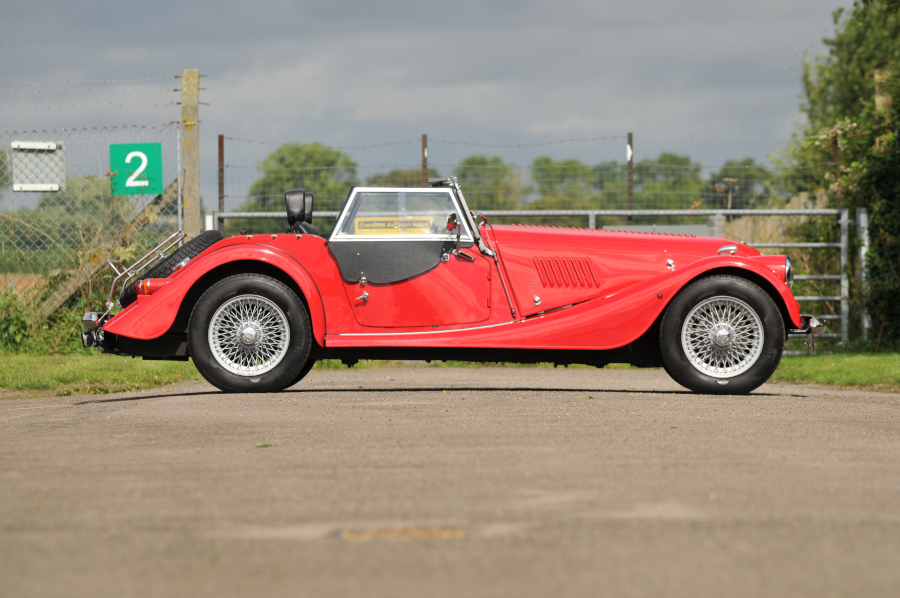
This was short-lived after sales figures proved that Morgan customers preferred to tailor their cars to their own specification. It was followed in 2006 by the 4/4 Anniversary, launched to celebrate the 70th birthday of Morgan four-wheelers. This featured a sports exhaust, 6×15 wheels, folding screen and retro-style hood. Two were made for each year of production.
In 2008 the 4/4 underwent another transformation with the launch of the 4/4 Sport 1600, a model which repeated elements of the Runabout. Offered in a standard specification with limited options, it used Ford’s 1.6-litre ‘Zetec SE’ engine rated at 110 bhp and driving through a Mazda-sourced five-speed gearbox. This would last until the 4/4 was discontinued in 2018.
The 4/4 can still boast the longest production run of any vehicle in the world, so despite the famously long waiting lists there are plenty out there, with a huge proportion of the 8231 produced having survived. They’re not your average classic though, so you need to know what you’re looking for.
Bodywork
One way to upset a Morgan owner is to repeat the urban myth that the cars are built on a wooden chassis. It’s not so: the chassis has always been steel, with the body frame constructed from ash. From 2000 onwards the 4/4 chassis were galvanised and the two and four-seat models do in fact use the same chassis: it’s the rake of the bodywork and hood at the rear which is different.
Post-’86 cars received a Cuprinol treatment to the wood which makes them more durable than earlier cars and it’s tricky to gauge the state of the wood as most of it is out of sight apart from inside the door opening. Specialist advice is to give the bodywork a good squeeze and poke around the edges – does it feel square and is it squidgy to the touch? It’s also worth checking whether the hinge post moves with the door open, which is a sign of a rotten frame, although do take care not to confuse it with worn door hinges.
Individual body sections can be bought and fitted, but it’s really a job for the Morgan specialist and even a skilled bodyshop used to modern cars will be unfamiliar with this kind of work.
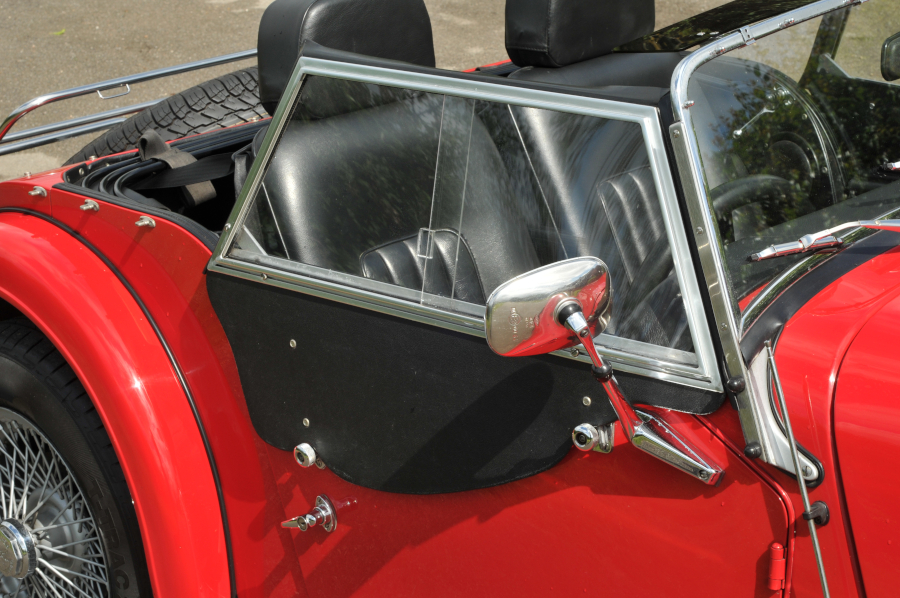
Elsewhere, the wings can corrode around the edges, with the steel strips on the wing edges of early cars causing a reactive corrosion with the aluminium wing itself, while the rear wings can corrode in the rear corners. The doors can bubble down by the rear corner, while the front valance or ‘flitch’ panel in the steering column area is double-skinned and can create a water trap which then rusts out. The valance can also rust where it joins the bulkhead.
Cracking around the rocker panels and sill boards can indicate rot or simply a sign of regular door slamming. You should see a joint in the body panels under the door which may be obscured with filler on a restored car – although a double joint was an acceptable technique used on several older restorations.
These bodies are of course entirely hand-built, so minor issues can include cracking of the factory-applied filler around the headlight pods, while a sure sign of a quality restoration is the fit of the bonnet: it’s the last panel to be fitted at the factory and so is tailored to fit each car perfectly. It’s notoriously tricky to get right so if someone’s taken the time to align the bonnet accurately then the chances are they’ve done a proper job elsewhere too.
The bodies tend to be a mix of steel and aluminium, with the scuttle and cowl in steel even on aluminium-bodied cars until 2002. A smooth edge to the wing instead of the prominent lip of the factory part suggests a lot of filler in the wings and at 11 hours fitting that’s not something you want to replace – they have to be cut and trimmed to fit the car.
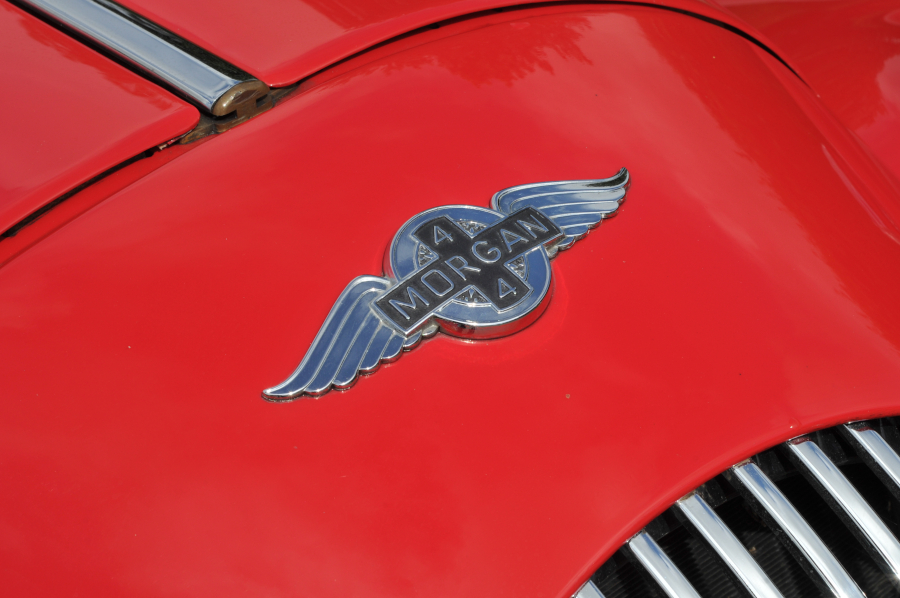
The gap between bumper and body is pretty slim and a minor impact can cause a dented rear panel even if the bumper itself has sprung back out.
The hood and side screens on a Morgan haven’t changed much since the ’30s and it’s all a world away from the multi-layered affair on a modern convertible. Morgan owners though are famous for never putting the roof up unless they absolutely have to, which is why it pays to check the hood fit. They tend to shrink with age and one which has never been erected will not have stretched enough to fit properly. Hoods are made to fit the car and an ill-fitting one will stand out a mile.
Engine and transmission
All the engines are mainstream power units from big car makers and all are known for their reliability. The older Ford engines are well served for parts by the legions of specialists out there, as is the Fiat unit, while the Rover engine is still well supported too. Interestingly, although the Fiat twin cam is a pretty rare beast, the cars are slightly cheaper than the Ford-engined Plus Four. Many of these cars will have a custom made stainless steel exhaust by now.
Water ingress through the bonnet vents can cause misfires, while cars with a catalytic converter can suffer with failed mounting brackets, although that can be fixed.
Most numerous by far are the 1968-1982 Ford ‘Kent’ Crossflow engine cars with 3513 produced, followed by the Ford CVH model of which 1900 were made.
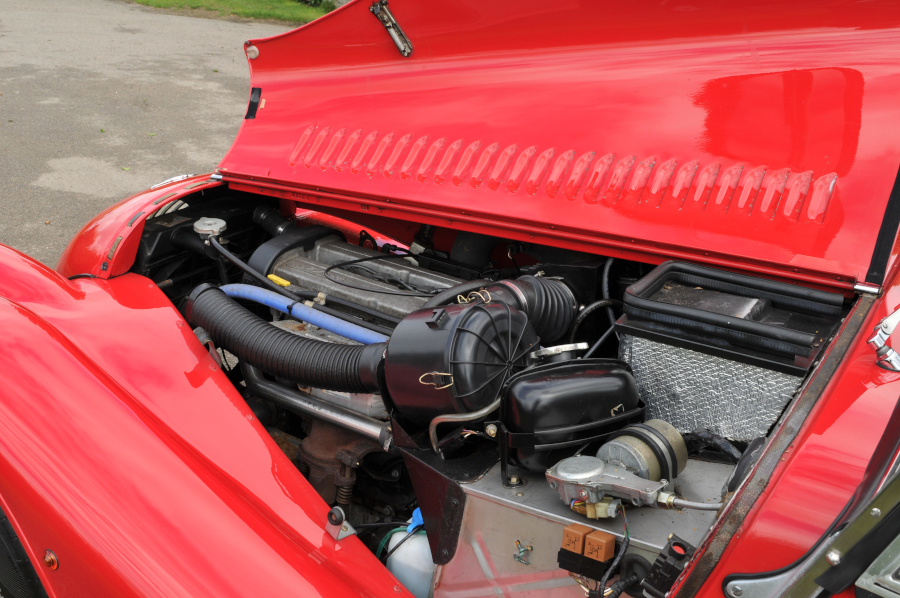
Suspension, steering and brakes
The suspension hasn’t changed much since the ’30s either, using a sliding pillar kingpin design. It’s simple but effective and although the bushes will wear, there’s a certain amount of tolerance before they need replacing and a Morgan specialist will be able to tell you how soon the work will need to be done.
The Salisbury rear axle is conventional and so is the braking set-up. Although the brake discs are Morgan items they’re reasonably priced.
Interior, trim and electrics
The electrical side of things is pretty basic, although the cars were extensively redesigned in 1997 to satisfy European type approval requirements and among the 114 changes was the introduction of an airbag system, as well as repositioned lights. You can spot airbagged cars by their more vertical dashboard and the longer bodywork.
Early cars use Marina switchgear, while later 4/4s used mainly Land Rover Discovery parts. Don’t be surprised though on early ’70s cars if you find a mixture of parts, for example an earlier column and later lights. In reality the factory itself probably wouldn’t be able to tell you the exact spec.
If you need a new windscreen, then from 1998 the only way to guarantee a fit is to buy the complete heated screen and surround, as the firm used several different glass suppliers.
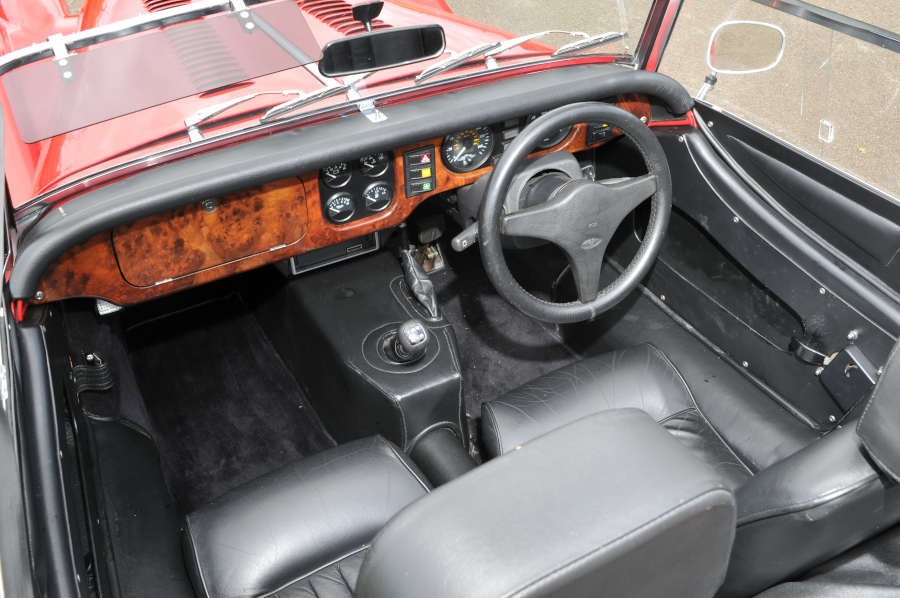
Morgan 4/4: our verdict
If you’ve never tried a Morgan then you won’t know what all the fuss is about… but once you’ve sampled even the basic 4/4 then a vanilla MX-5 or MGB just won’t cut it any more.
It may lack the sheer grunt of its Plus 8 big brother but even the lower-powered 4/4s feel like fast cars and the driving experience is as involving as it gets. You’ve also got the sheer satisfaction of knowing that you’re driving something which was hand-built by craftsmen rather than stamped out in a factory and you don’t get that this side of a 1950s Rolls-Royce.
Everything’s slightly unusual in the Morgan world and values of 4/4s are no exception. The sentiment attached to the cars means that dealers will often be cheaper than private sellers and since most Morgan dealers are smaller, enthusiastic firms rather than big dealer groups then you can rely on the cars having been fully checked.
Overseas demand is strong and the very few project cars which do come up will generally be snapped up very quickly. Despite the diehard image of Morgan fans, most of the cars see only summer use, so don’t be suspicious if 40-year old cars are only showing 80,000 miles.
Morgan 4/4 timeline
1936
The 4-4 is launched with an 1122cc Coventry Climax engine.
1937
A four-seater version joins the range.
1938
The original Meadows gearbox is replaced by a four-speed Moss box
1939
The Standard 1267cc engine is fitted.
1946
Postwar production resumes under the name 4/4.
1950
The 4/4 disappears from the range temporarily after Standard discontinues its smaller engines.
1954
The 4/4 is reintroduced as the ‘Series 2’ using the 1172cc Ford sidevalve engine. This marks the end of the ‘flat rad’ cars and the introduction of the curved radiator grille.
1960
The ‘Series 3’ cars are introduced with a wider body and the Ford Anglia 105E engine.
1961
The ‘Series 4’ arrives with the 1.5-litre version of the Ford engine.
1963
The ‘Series 5’ features the 116E Cortina engine and from 1968 pairs it with the Lotus Cortina gearbox.
1969
The 4/4 receives the 1/6-litre Ford ‘Kent’ Crossflow engine.
1981
When Ford discontinues the Kent engine, Morgan briefly uses the Fiat Twin Cam.
1982
The Fiat engine is replaced by the new Ford CVH.
1983
The four-speed box is replaced by the Ford Type 9 five-speed.
1985
The wider body debuted on the Plus Four becomes an option.
1986
The chassis is powder coated and the ash bodywork frame Cuprinol treated.
1991
The fuel injected XR2i-specification engine is fitted.
1993
The CVH is replaced a 1.8-litre version of Ford’s new 16-valve Zetec engine.
1997
The 4/4 gains bodywork revisions including repositioned dashboard and longer doors to permit airbags
1999
The four-seater model is reintroduced.
2005
The Zetec engine is replaced by the Ford Duratec.
2003
The Runabout is added, essentially an entry-level 4/4 with lower specification.
2006
The 4/4 Anniversary model celebrates Morgan’s 70th birthday.
2008
The 4/4 Sport 1600 is launched, using the 1.6-litre Ford Zetec-SE engine with Mazda five-speed gearbox.
2018
Morgan 4/4 production ends.

